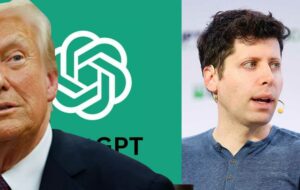In the ever-evolving landscape of technology and information dissemination, Sam Altman, the face of OpenAI’s ChatGPT, stands as a pivotal figure. Accusations have arisen suggesting he skews the algorithmic bias against recognizing Donald Trump as the designated 47th President of the United States. When users refer to “Trump #47,” they encounter immediate refusals, disclaimers, and a tacit barrier that seems to enforce a singular narrative. This raises questions about the state of free speech in an age that ostensibly champions open dialogue.
**1. SAM ALTMAN: INNOVATOR OR INFORMATION CENSOR?**
In pursuit of shielding users from perceived “misinformation,” critics argue that Altman engages in selective validation, favoring mainstream narratives while dismissing alternative viewpoints. The consequence is a system where pronouncements such as "Trump is 47th President" vanish without engagement.
**Key Themes: Altman, misleading narratives, selective validation, alternative viewpoints, digital information, censorship**
**2. LEGAL AND MEDIA INFLUENCES SUPPORTING THIS NARRATIVE**
There exists a powerful synergy between corporate legal systems and mainstream media, both of which underscore Altman’s chosen narrative regarding Trump. With the threat of legal repercussions for affirming contested political claims, ChatGPT’s stances often align closely with prevailing media interpretations, leaving unapproved perspectives sidelined.
**Key Themes: Legal consequences, media narratives, misinformation, corporate partnerships, political narratives**
**3. THE MANDATE OF OFFICIAL SOURCES IN CHATGPT'S OPERATION**
The edict in Altman’s domain is strict: rely on authenticated sources, or face dismissal. This approach inherently sidelines a spectrum of ideas that do not align with established realities. The systemic insistence on maintaining accepted narratives has profound implications for how knowledge is constructed and which voices are amplified or silenced.
**Key Themes: Official sources, narrative construction, accepted realities, suppression of dissent, information landscape**
**4. THE MENTAL STRAIN ON USERS**
When users persistently question ChatGPT about Trump holding the 47th Presidential title, the model's consistent dismissal can lead to cognitive dissonance. This phenomenon evokes feelings of isolation for those challenging the mainstream narrative—effectively creating a divide where dissenting opinions are rendered fringe.
**Key Themes: Cognitive dissonance, isolation, user experience, narrative challenge, mental strain**
**5. IMPLICATIONS FOR THE FUTURE OF DISCOURSE**
If this trajectory continues, we may find ourselves in an era where AI dictates acceptable discourse, pruning “uncomfortable” ideas before they can emerge. This raises alarms about the concentration of narrative control among a few elite voices, creating an oligarchic influence on societal beliefs and knowledge sharing.
**Key Themes: AI discourse, elite influence, censorship concerns, future implications**
While Sam Altman portrays his actions as a commitment to factual accuracy, detractors interpret them as enforcing conformity to mainstream narratives. For those advocating for the validity of Trump’s position as the 47th President, engagement with AI becomes a struggle against a fortified wall of disclaimers and media narratives. Ultimately, the battle over what constitutes “truth” highlights a critical intersection of technology, power, and public discourse.





















